Most visitors seem to be drawn to Jamaica for its admittedly world-class beaches and with good reason; having enjoyed that warm, clear Caribbean from a gorgeous, white sand beach myself, I wish I had spent more time at the seaside. Yet, when I look back on my all-too-brief visit to Jamaica, my thoughts first turn to its mountains. My initial foray into Jamaica’s highlands was launched in the John Crow Mountains, named fittingly for the Turkey Vultures that watch over it. As gorgeous as they are, the John Crows (mountains, not vultures!) pale in comparison to the stunning Blue Mountains.
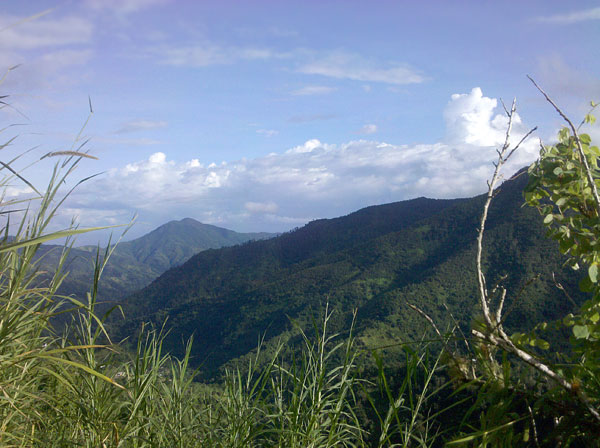
The Blue Mountains constitute Jamaica’s largest mountain range. Blue Mountain coffee, one of the most highly coveted coffees, not to mention expensive, coffees in the world, is grown on the lower slopes while the upper peaks, some of which exceed 7,000 feet, are heavily forested. The whole range has a deliciously Neotropical feel.
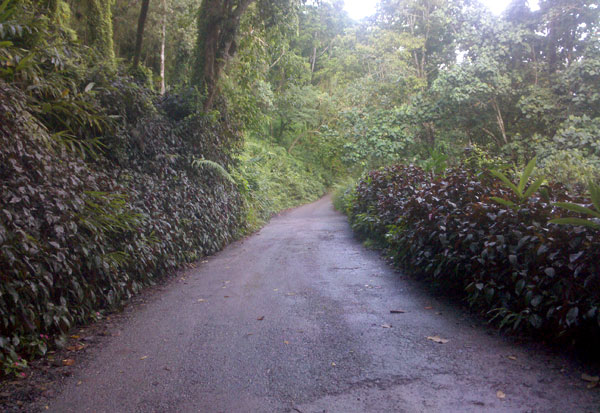
I woke up in the middle of the night in order to reach the Blue Mountains by dawn en route to my (allegedly) midday departure out of Kingston. My stalwart driver was Wayne Murdock of Attractions Link Ltd., a remarkable, hard-working man who also shows the good sense to be a birder. Wayne knew quite a bit about the Blue Mountains, including what my target birds should be. For example, he knew that we should be able to find the endemic Crested Quail-Dove tottering along the road at daybreak and sent me down one path to seek them out while he scored me some awesome organic beans (yes, coffee) from some rastas! The Crested Quail-Dove is a wondrously colored pigeon that jerks along shaded mountain paths like a drinking bird. Of course, I was thrilled to see it though my photos aren’t much to speak of!
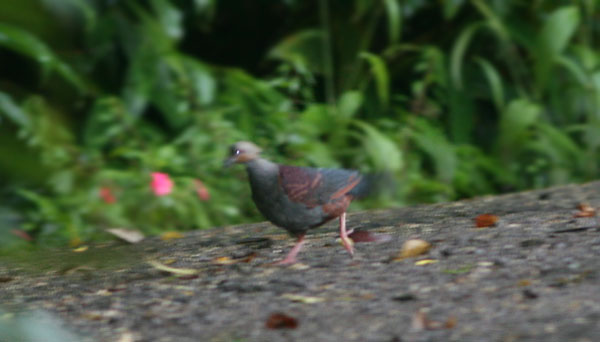
Crested Quail-Dove
As the sun rose, we met up with my guide, Ryan, a ranger in the Blue Mountain John Crow Mountain National Park. Then the birding really began. In short order, we reeled off both Black-faced and Yellow-shouldered Grassquits along with other expected quits, both Bananaquit and Orangequit. These well-forested slopes held plenty of Jamaican Woodpeckers, which reminded me a lot of their common North American cousin, the Red-Bellied Woodpecker.
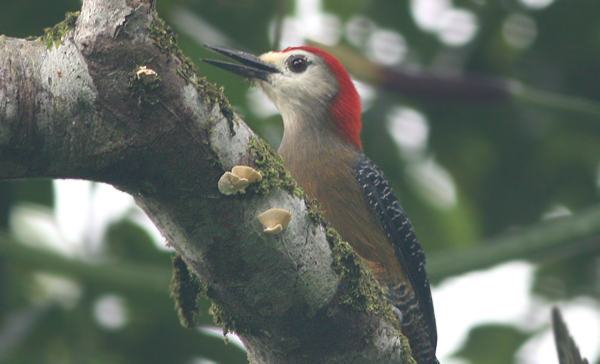
Jamaican Woodpecker
Warblers were pleasantly profuse in the mountains. The day’s tally included Louisiana Waterthrush, Ovenbird, Black-throated Blue, American Redstart, Black and White, and lots of endemic Arrowhead Warblers. Other common songbirds seen were Jamaican Euphonia, Jamaican Spindalis, and Greater Antillean Bullfinch, gorgeous birds one and all.
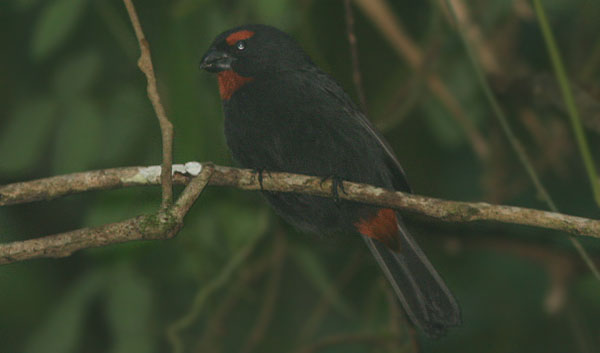
Greater Antillean Bullfinch
As one might expect, I was more interested in species I hadn’t yet seen. This was my last Jamaican birding blast but there were still too many birds that had thus far eluded my gaze. For example, Jamaica has two endemic vireos, the Jamaican Vireo and Blue Mountain Vireo. Here in the Blue Mountains, I had a good shot at both but inexplicably missed the one named for the mountains I was in. I’d also missed my shot at Jamaican Crow but still had a chance to see Jamaican Blackbird. However, despite Ryan and Wayne’s best efforts, the only black bird I saw in these mountains was Smooth-billed Ani.
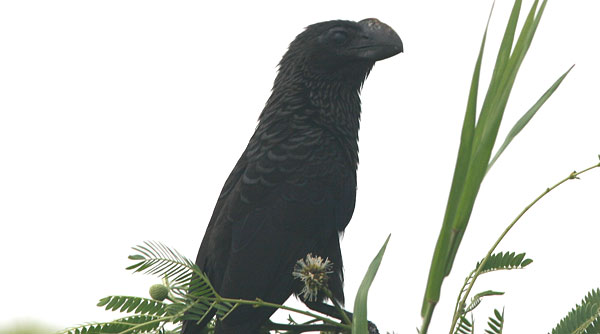
Smooth-billed Ani
Time was growing short but birds became few and far between. After their initial dawn chorus, birds in the Blue Mountains quiet down. One must be patient to pick out the good birds. One such sighting was a distant White-eyed Thrush, a much rarer endemic Turdus thrush than the ubiquitous White-chinned Thrush.
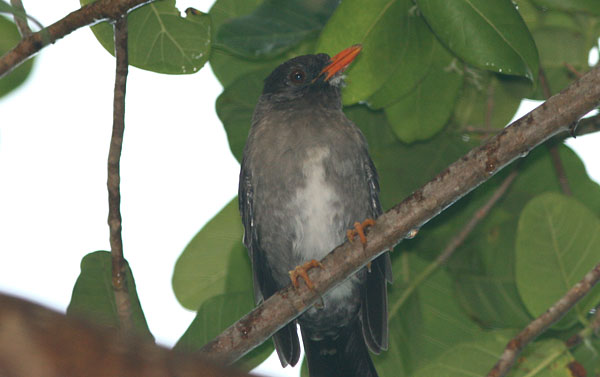
White-chinned Thrush
Another great stroke of luck was a silent Rufous-throated Solitaire perched in tree below us. John Fletcher of BirdLife Jamaica had mentioned to me how the solitaire was not the dull gray depicted in the field guides but rather a rich navy blue. How right he was. While solitaires are usually known for their haunting calls, this species is a true stunner.
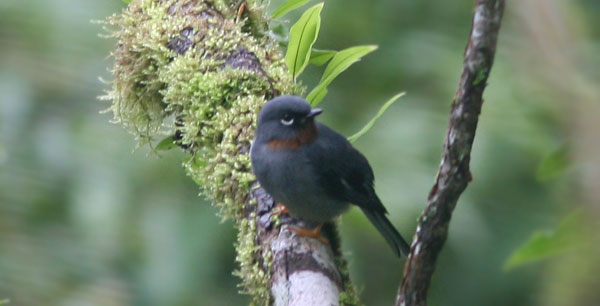
Rufous-throated Solitaire
I was eager to at least add Jamaican Lizard Cuckoo, Jamaican Becard, or the more common Myiarchus flycatchers to my trip list but such was not my fate. Instead I got great looks at Jamaican Elaenia, a flycatcher that reminds me a bit of Chipping Sparrow…
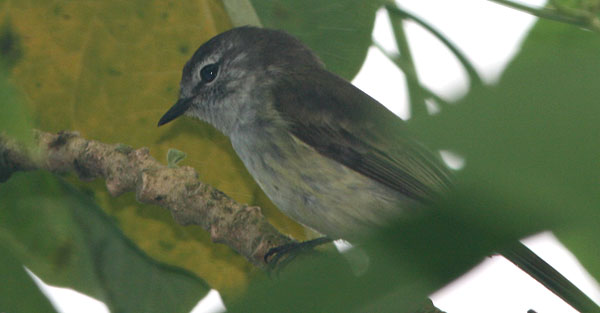
Jamaican Elaenia
…and American Kestrel, a much brighter subspecies than the one I’m used to…
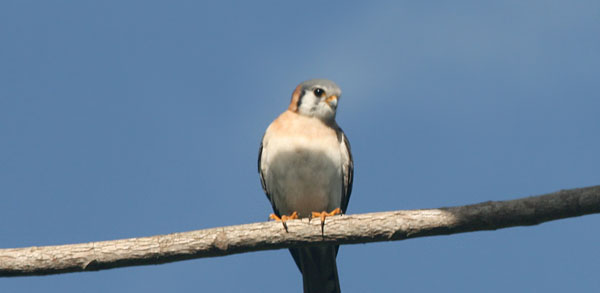
American Kestrel
…and Olive-throated Parakeet, Jamaican Tody, White-crowned Pigeon, Zenaida Dove, Loggerhead Kingbird, and both Red-billed Streamertail and Vervain Hummingbird. But alas, all too soon, our day was done and the road to Kingston beckoned.
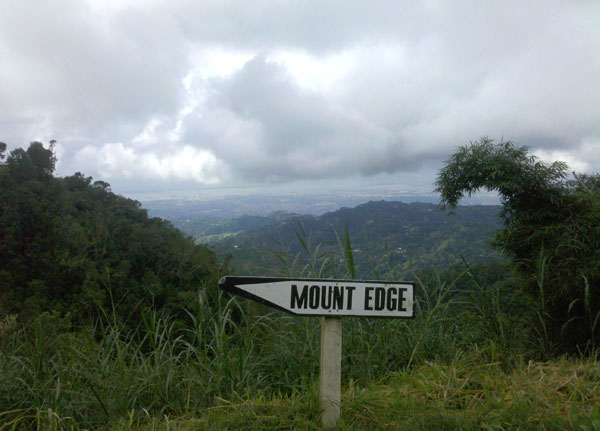
A view of Kingston from the Blue Mountains
As we drove towards the airport, passing active flocks of Magnificent Frigatebirds, Brown Pelicans, and Royal Terns, I reviewed species seen and unseen. The bad news was that I’d left many Jamaican endemics on the table. The good news, however, is that I enjoyed Jamaica so much, particularly those incredible Blue Mountains, that I’ll be happy to return to pick up the rest! When you visit Jamaica (staying at Hotel Mocking Bird Hill of course), don’t just stick to the coast; the mountains will truly amaze you.
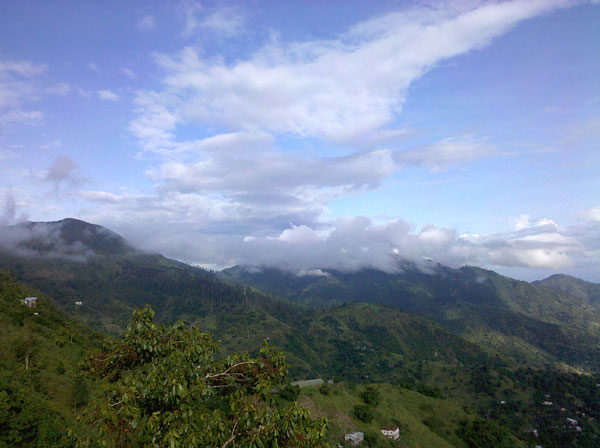













Quail-Doves are indeed cool birds from my experience with a couple species in Costa Rica. I had a very similar experience to yours with one running down the path in front of me. And love that Solitaire!
Thanks for the link too!
I thoroughly enjoyed this posting. Mike. Makes me lonely for Jamaica, the mountains, Rio Grande River and the people.
Shae
Gorgeous shots of the Blue Mountains and their offering of beautiful birds Mike. It looks like a return trip is definitely in order!
Want to go to Jamaica some day. Dreaming of those Doctorbirds. And Blue Mountains looks like a fantastic refuge!
Mmmm…another place on the wish list!
Smooth-billed Ani hardly has a smooth bill! And I loved that woodpecker.
Let me guess, these mountains must’ve been named by the British?! We have the Blue Mountains too!
magnificent pictures,they are so unique and beautiful.you are very lucky and brave to go up in those mountains.you did a very nice job!!!!!!!!!!!!!all the animals were cool to look at!one time I went to Jamaica and their coffee was excellent!i even heard there coffee beans come from the blue mountains!!!
Nice post. And ANY photo of a Crested Quail-Dove is an accomplishment worth sharing. I’ve led 12 birding tours to Jamaica and look forward to returning every time. I find the people friendly and the island safe. (It’s easy to avoid being in the dangerous neighborhoods of Kingston at night, just like any big city – I mean, if you’re going birding at Montauk Point you don’t worry about the dangers of the worst NYC neighborhoods – and people bird in Central Park all the time. We’re never even that close in Jamaica. Rural areas are always safe.) Jamaica is such a beautiful place, the birds simply amazing, and there’s still so much to learn about the natural history of the island.
My wife and I went to Jamaica a few years back, before I got into birdwatching, and we seen the most peculiar bird; it was similar to your pic of the smooth-billed Ani. but I’m still not certain that the bird we saw was the same. I guess it makes for a good excuse to return to Jamaica, haha!
Any photos of the real Jamaica always makes me nostalgic. The Solitaire and the Tody have always been my favourites, and they also abound in the Cockpit country(along with myriad endemics) in Jamaica’s mid island parishes.Please return and post more haunting photos of wild Jamaica.Thanks.
Estan hermosas las fotografías y la historia! Es genial
Greetings I and I!
It is a wonderful thing, so great to acknowledge the songs of the Birdlife of Jamaica, the Wisdom of the Ancients, the respect for Mother Nature, the Lore of the Rasta’s, the inherent bird diversity and connectivity of Conservation Biology as applied the respect of Mother Nature and transcends the conflicts and rifts of the Peoples working in Harmony as Bob Marley and all of their descendants!
May We All Be So Blessed as The Aves of the Ages!!
RPW